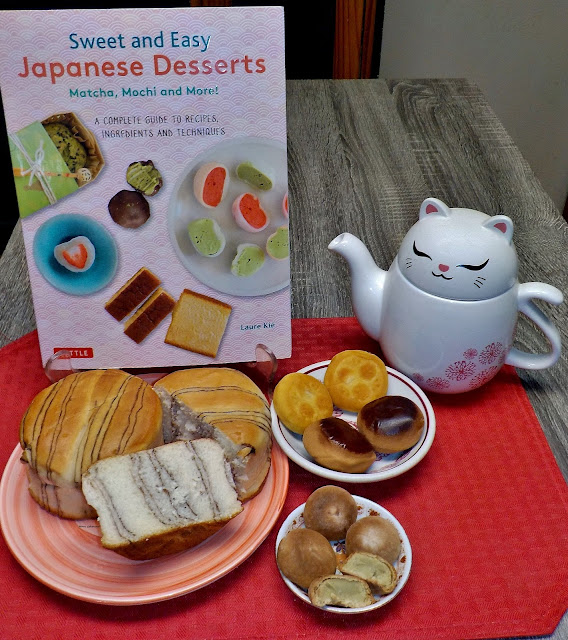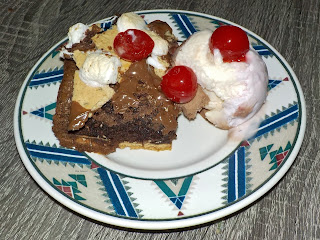See that title, well, it’s not 100% correct. When it comes to the word “traditional”, it’s geared towards the foods that are well known for that part of the United Kingdom. Also, it has to be taken into account that other countries influenced each other. Those, in England, did not stay put, as could be said for Scotland, Ireland and Wales, with a smattering of isles here and there.
Oh, and don’t forget all the invaders from Northern Europe (those Vikings were a randy bunch), and the Romans that marched through (the originators of the One World Order ideal).
When I write about British recipes, they are the typical ones I have seen depicted in television shows, movies, or written in one of my favorite genres, British mysteries. I have already shared a few, San Juan Record, July 03, 2018 – The Cornish Pasty; June 26, 2024 – English Style Fish and Chips; and March 19, 2025 – The Ploughman’s Lunch. When it comes to Shepherd’s Pie though, do a search on my food blog and you will find recipes that use the traditional ground lamb, and the not so traditional ground beef, elk, venison and alpaca. Remember though, when I say “British”, it also refers to the influences from the surrounding countries of the United Kingdom.
So, if my kitchen was a typical pub kitchen, what would be on the menu? Besides what I mentioned above, there would be: Bangers and Mash, Bubble and Squeak, Toad in the Hole, Yorkshire Pudding, and variations of Shepherd’s Pie, one featuring chicken. Reading the first three recipe names, I bet you are wondering if I am cooking up food, or creating a weird new comic series. Yes, they are actual names of recipes which I will share with you. By the way, the main meat ingredient for those three recipes is sausages; oh, those Brits just love their sausages.
Bangers and Mash
Bangers and mash is a traditional dish consisting of sausages and mashed potato. The dish is usually served with onion gravy, but may also include fried onions and peas.
Bubble and Squeak
Bubble and squeak is a dish made from cooked potatoes and cabbage, mixed together and fried. Since cabbage contains a lot of water, it tends to make "bubbly" and squeaking noises as it wilts and cooks.
If, after making the first two recipes, you happen to have loads of mashed potatoes and chopped cabbage available, how about going Irish? Colcannon, aka Irish Mashed Potatoes, is an Irish mashed potato recipe made with greens (cabbage, kale or mustard greens), scallions, and plenty of butter and cream.
Toad-in-the-Hole
Toad in the hole is a traditional dish consisting of sausages in Yorkshire pudding batter, usually served with onion gravy and vegetables. Historically, the dish has also been prepared using other meats, such as rump steak and lamb's kidneys.
Yorkshire Pudding
Yorkshire pudding is a baked pudding (more a bread than a dessert pudding) made from a batter of eggs, flour, and milk, traditionally served with roast beef or as part of a roast dinner in British cuisine. It's known for its puffy, crispy exterior and soft, slightly doughy interior. The batter is similar to pancake batter but thicker, and it's often cooked in hot fat, traditionally beef drippings, which contributes to its savory flavor.
Yes, I have a traditional Yorkshire Pudding baking tin which consists of 6 cups/compartments, that are not attached like a typical muffin tin pan. Metal rods hold each cup separate from each other. They are deeper than muffin tins, so the puddings can rise up higher, crispier on the outside, and fluffier, yet still doughy, on the inside.
Shepherd's Pie/Cottage Pie
Cottage pie is a meat pie, traditionally made with ground beef, vegetables, and gravy, topped with mashed potatoes. In the USA, cheddar cheese is often mixed into the mashed potatoes. While the terms cottage pie and shepherd's pie are often used interchangeably, shepherd's pie is traditionally made with ground lamb or mutton, and parmesan cheese is mixed into the mashed potatoes.
Traditional Shepherd’s Pie/Cottage Pie
Ingredients:
The Filling:
2 ½ lbs. ground lamb or beef (depending on which pie is being made)
1 large onion, diced
1 (4 oz.) can mushrooms, diced
2 Tbsp. tomato sauce or ketchup
2 Tbsp. Worcestershire sauce
1 (16 oz.) bag frozen peas and carrots
1 Tbsp. each crushed dry thyme and marjoram
1 tsp. pepper
2 Tbsp. flour
1 cup beef stock
The Topping:
6 large potatoes, peeled and cut up
4 Tbsp. butter
1/2 cup milk
6 Tbsp. grated parmesan cheese
1/2 tsp. ground black pepper
Paprika
Preparation:
In a large skillet, high heat, brown the meat and drain excess oil. Add the onion and mushrooms, letting cook till the onion softens. Add tomato and Worcester sauces, frozen vegetables, herbs, pepper, flour and beef stock; mix thoroughly and bring to a boil. Reduce heat to low and let simmer for 15 minutes.
While meat mixture is simmering, boil the potatoes in salted water until tender. Drain and mash the potatoes, add butter, milk, grated cheese and pepper to the potatoes.
Preheat oven to 375F. In a 3-quart rectangular baking dish, spread 1/2 potatoes on bottom of baking dish; spread out the meat mixture; top with the other 1/2 of potatoes; sprinkle paprika over top. Bake for 30-40minutes; potatoes should be lightly browned, and the pie heated throughout.
Makes 8 – 10 servings.
When it comes to pure comfort food, this mixture of baked potatoes, meat and vegetables is definitely a must have.
Creating the chicken cottage pie, cooked and chopped chicken breasts were used, instead of beef. Whole kernel corn was added to the vegetables, instead of mushrooms. Instead of tomato sauce or ketchup and Worcestershire sauce, I used 1 (10.5 oz.) can of cream of chicken soup, plus ½ cup milk for an extra creamy sauce. When it comes to shepherd’s pie/cottage pie, not everyone eats a red meat of some type, so chicken is a great substitute.There are so many cookbooks geared towards English pub foods, and if you’re wanting to purchase one, I say go for the older editions. They have the more traditional recipes listed, instead of being updated to more modern trends and fads. "Pip pip, cheerio, and all that rot!"
Mary Cokenour









































